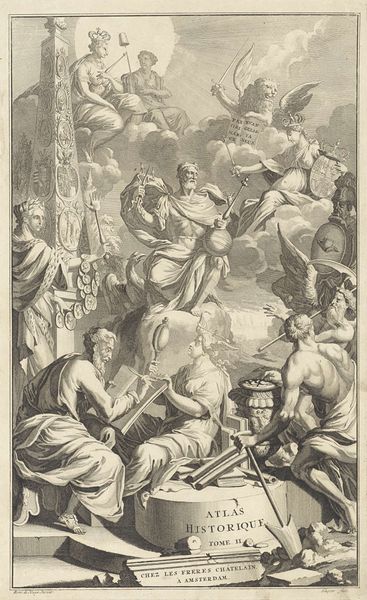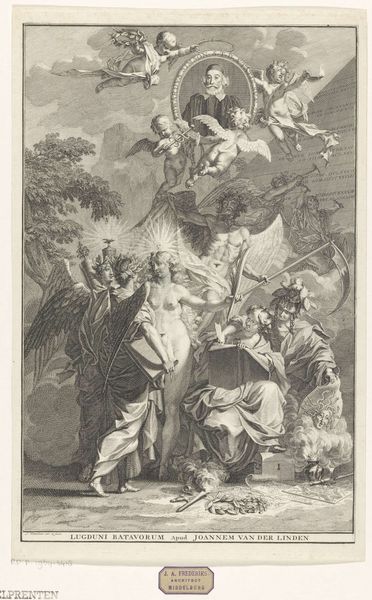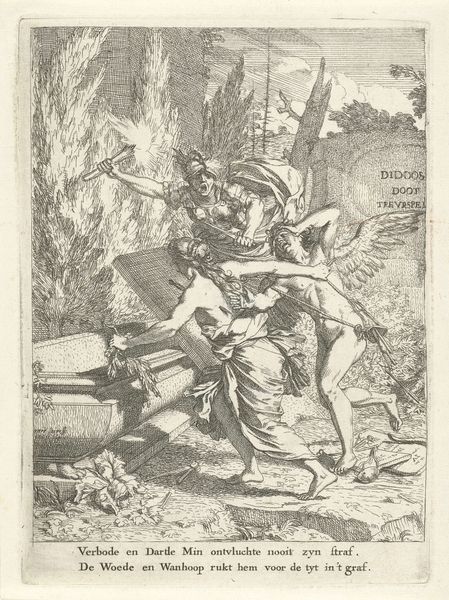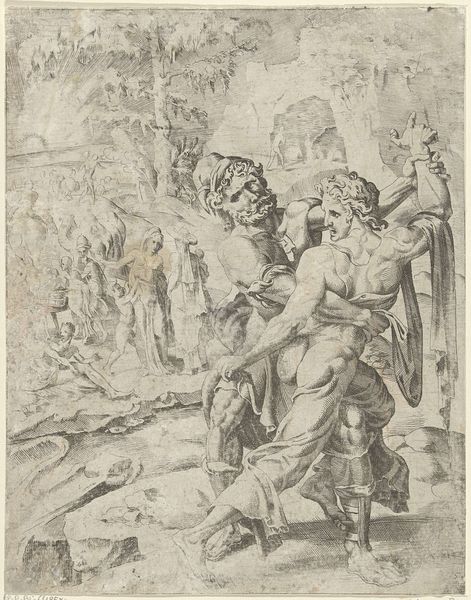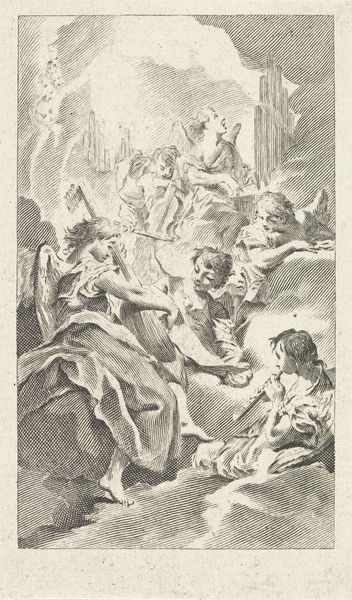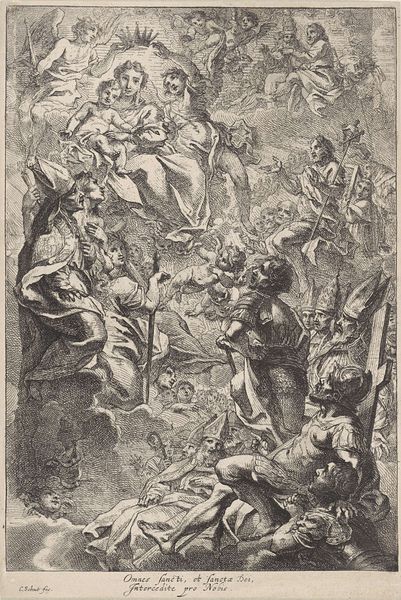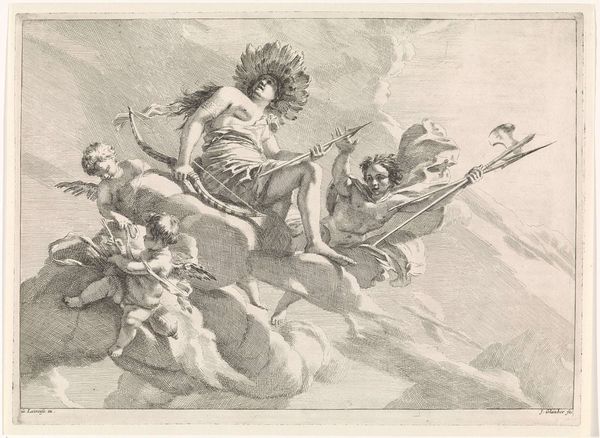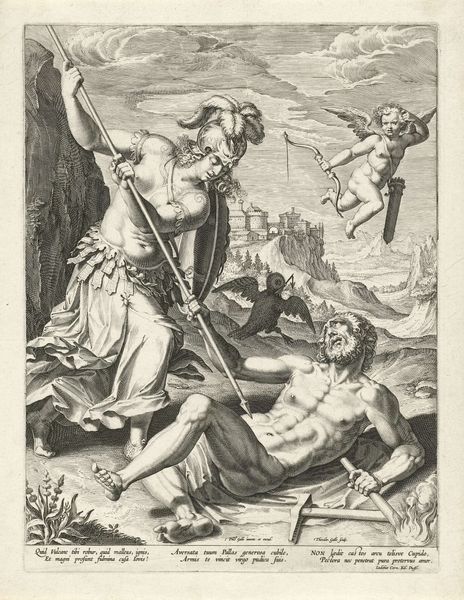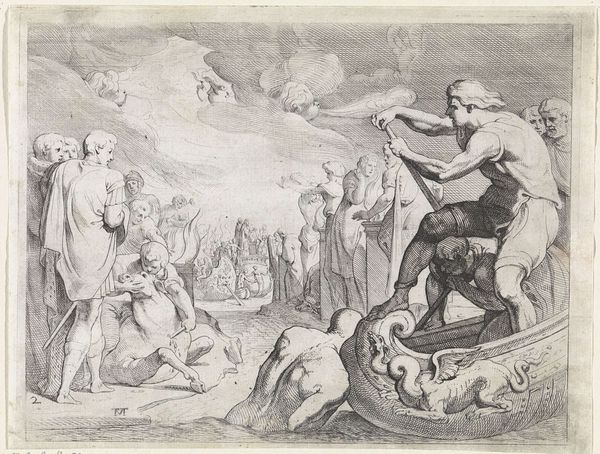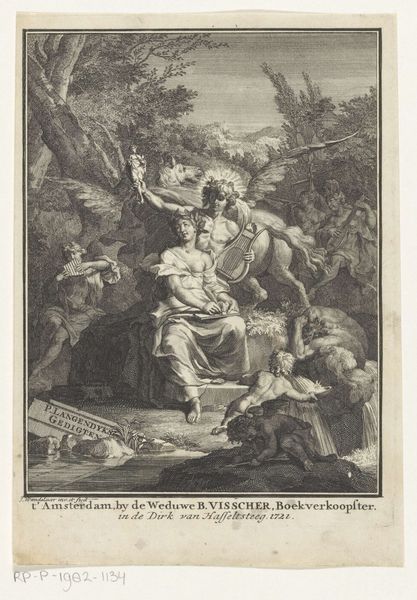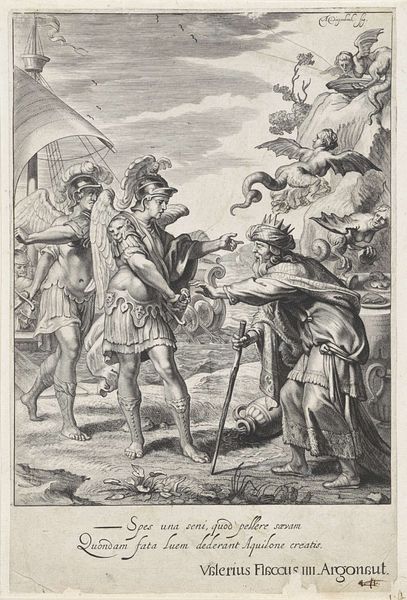
drawing, pencil
#
drawing
#
neoclacissism
#
pencil sketch
#
figuration
#
pen-ink sketch
#
pencil
#
line
#
sketchbook drawing
#
pencil work
#
history-painting
#
academic-art
Dimensions: height 139 mm, width 84 mm
Copyright: Rijks Museum: Open Domain
This is Ludwig Gottlieb Portman’s depiction of the treacherous murder of Lucius Siccius Dentatus, made with pen and brush around the turn of the 19th century. The Roman soldier Dentatus was known for his military successes, but also for his opposition to aristocratic privilege. In this image, Portman shows Dentatus fighting valiantly against his assassins, while others look on from the rocks above, preparing to hurl stones at him. This print was made in the Netherlands during a period of political upheaval, and the story of Dentatus, murdered for his principles, would have resonated with those who saw themselves as fighting against tyranny and oppression. The artist would likely have studied classical history and literature, perhaps in an academy setting, and would have known that Dentatus was seen as a hero by the common people of Rome. The image itself is relatively small, but its message is powerful: that even in the face of overwhelming odds, it is possible to stand up for what you believe in. To understand the meaning of this artwork better, we need to look at the history of the period in which it was made. What were the social and political conditions in the Netherlands at this time? Who were the people who supported the ideals of the French Revolution, and what did they hope to achieve?
Comments
No comments
Be the first to comment and join the conversation on the ultimate creative platform.
